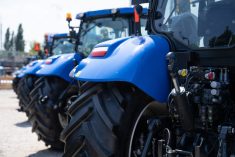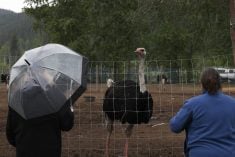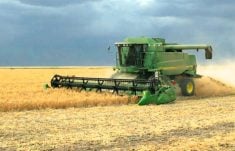It never hurts to have another tool in the toolkit, which is why Manitoba farmers are seeking crop insurance for aerial-seeded canola.
“I’ve never seeded canola by air, but guess what, a lot of farmers have,” said Keystone Agricultural Producers Doug Chorney.
“It’s an important tool ,and in 2011 a lot of acres were seeded that way successfully.”
KAP and a delegation from the Manitoba Aerial Applicators Association will meet today with Manitoba Agricultural Services Corp., the provincial crop insurer, to discuss the possibility of aerial seeding insurance for canola.
Read Also

Arlene Dickinson says recent trip to Asia opened her eyes to new trade opportunities
Arlene Dickinson says Canada must take up decades-old suggestions to support the agriculture and food sectors
The spring of 2011 was an extremely wet and challenging time for growers in southwestern Manitoba. Overland flooding saturated thousands of acres of cropland and most producers failed to seed a crop.
However, some growers managed to get their canola in the ground by taking a chance on aerial seeding.
Chorney said the amount of aerial seeded canola in 2011 was surprising.
He heard that one aerial applicator did 10,000 acres in Manitoba and another company seeded 12,000 acres.
The aerial applicators association will present data on acreage and canola yield from aerial seeded crops during the MASC meeting to demonstrate that it is a viable option.
A representative of the association wasn’t available to comment before press time Oct. 21.
Chorney said insurance for aerial seeded canola might be predicated on crop stand.
“We would accept the terms of the insurance being set based on stand viability, much like they do with winter wheat or forage seed crops. They have the option to assess the stand viability and not offer insurance if it’s too thin,” he said.
“Once you have stand viability … you’re not taking any more risk than you would with a ground-seeded crop.”
Chorney said aerial seeding may represent a tiny fraction of provincial canola acres in a typical spring, but growers should have the insurance option.
“It’s not a significant percentage of our acres, but it’s significant for those farmers.”
An aerial seeded crop produced record yields on Dale Thorenson’s farm near Newburg, North Dakota, this year.
Late snow melt and heavy rain had drenched, Thorenson’s fields by late May. Thorenson’s son and nephew seeded canola with an airplane June 1 because they wanted something in the ground to soak up moisture.
After incorporating the seed with a harrow and a coulter, the canola yielded 50 bu. per acre.
“For canola, I’d say that would match the highest yield we ever had,” said Thorenson, U.S. Canola Association assistant director.
“(We) didn’t expect it to turn out as well as it did.”















